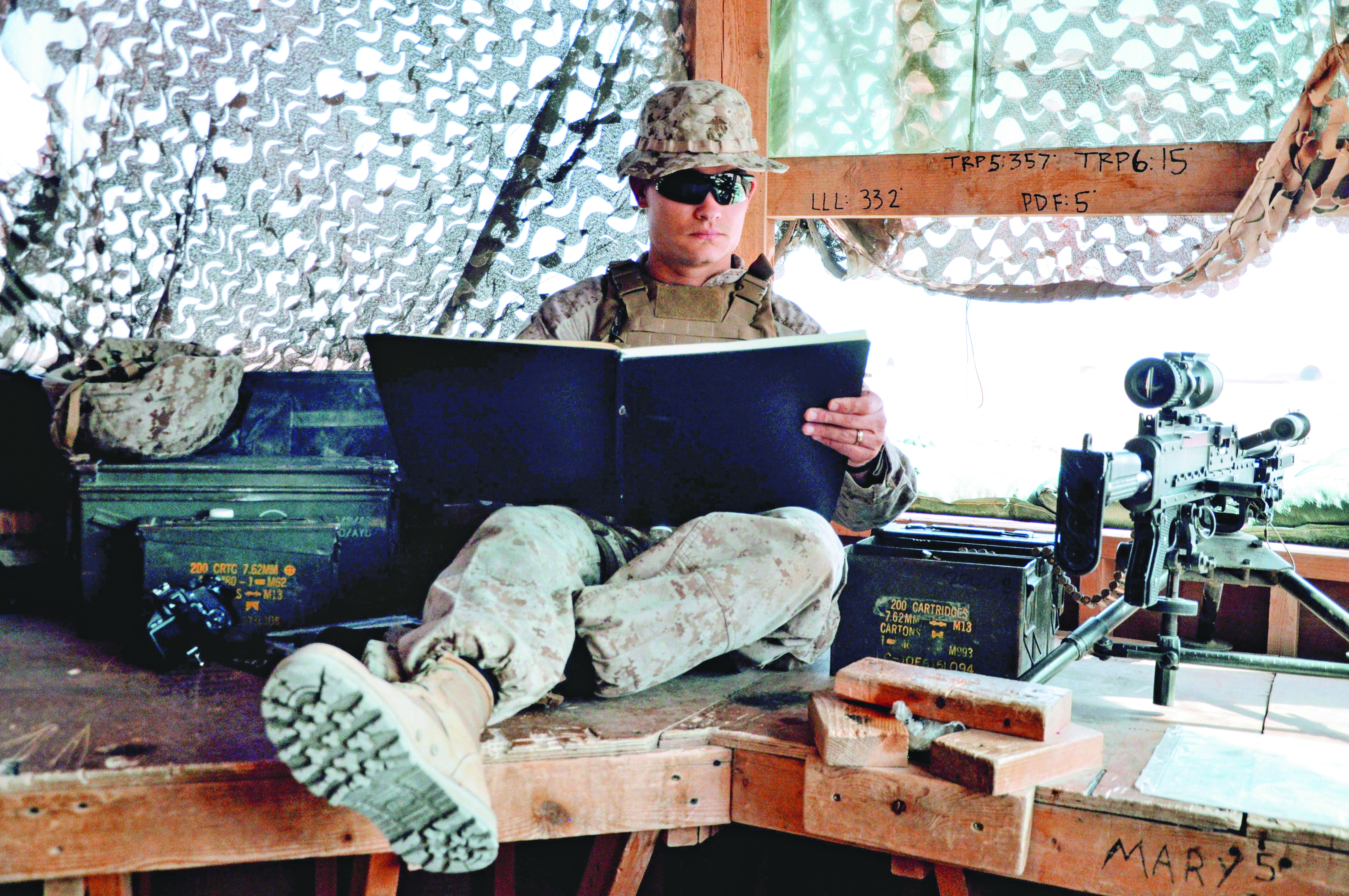(This article by freelance writer Jennifer Hlad originally appeared in the May 2021 issue of Military Officer, a magazine available to all MOAA Premium and Life members. Learn more about the magazine here; learn more about joining MOAA here.)
Charles J. Baumann realized he had a love and talent for art when he was in elementary school. But he was told artists don’t make any money, and he shouldn’t even consider it as a career choice.
Baumann enlisted in the Marine Corps in the delayed entry program, but after being offered a scholarship to Texas A&M, he called his recruiter and delayed even further. Eventually, he joined the Corps — as an officer — and quickly learned drawing and painting didn’t have to be relegated to the back burner.
Today, he’s a Marine Corps captain and holds two military occupational specialties: logistics officer and combat artist. He has deployed to Djibouti, Iraq, Kuwait, and Norway as an artist, and his art is hanging in the National Museum of the Marine Corps and at The Basic School, both in Quantico, Va.

Capt. Charles J. Baumann, USMC, captures the scene during a deployment to Djibouti.
He spoke to Military Officer about his journey.
Q. You’ve created art from your own Marine Corps experiences, but also deployed with other units as an artist. How does that work?
A. Commanders in the Marine Corps are responsible for maintaining the historical program in their unit. … In a perfect world, commanders would turn to the Marine Corps Museum and look at the combat art program and say, “Hey I’m deploying in six months, I want to take an artist for … this portion of deployment.” Because there’s a lack of awareness of the program, it has been the opposite, where we as the artist team have to essentially create our opportunities. … I just happened to know somebody who was in that unit, or I met somebody who just came from that unit and they connected me with the operations officer. It was me, sending out emails, kind of introducing myself … trying to convince them that we’re worth
bringing along.
At the time for all three of those deployments, I was actually an instructor at The Basic School. And … it just happened to work perfectly that my schedule on the personal side could be shuffled around, the command was willing to let me go, and the combat art program was able to financially support the operation. And then the unit was happy to have us.
[VIDEO: More From the Artist Via the National Museum of the Marine Corps]
Q. What do you enjoy about being a combat artist?
A. Realizing that I am able to combine two passions into one, and that they complement each other, is probably the most exciting thing. Because I’ve almost always known I wanted to be in the military. And I’m very excited about that. But I’ve also always enjoyed being an artist, so just being able to combine those two things only compounds my excitement and my passion and my energy, rather than taking from one and having to borrow from the other.
Because the Marine Corps has become my source of inspiration and motivation, essentially, even if I’m not doing artwork, I’m able to go to work, I’m able to do training, I’m able to deploy, and still be thinking about it. … Literally, subject matter is everywhere I go when I’m in uniform. And … that just really keeps me motivated and deep into my desire or passion to do that.
And I would say that the second thing that I enjoy about it is just that when I do create the work, by God’s grace, my skills have improved over the years. … It’s just really encouraging and uplifting when Marines or people related to Marines get excited and just appreciate your artwork, and just to note that I’m contributing to the Marine Corps [and] the history of the program. It is humbling to know that I’ve been able to put my fingerprint on the Corps, and it’s been documenting history in a very unique way.
[Follow the Artist: Instagram.com/cjbaumann_art]
Q. What advice would you give someone else who is an artist, but also thinking of serving?
A. Don’t believe the lie that you have to choose between the two. They can absolutely complement each other. And then, I would say also, take advantage of that inspiration. Take advantage of those deep values that are going to shape you and mold you as an individual. And let those come out in your artwork, whatever medium that is. And just practice that. … You’ve got to practice your skill, no matter where you are.
Being an Officer Isn’t Always Easy. Getting Advice from One Is.
We’ve filmed some of the more than 360,000 members of our community speaking about the issues they’ve faced over the years. See the latest from our Officer to Officer series.
